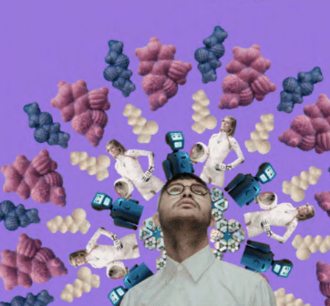Smithsonian Futures Beacons

Institute for the Future Teams with the Smithsonian to Debut New “FUTURES” Exhibit Inviting Visitors to “Time Travel” to Their Own Future
First-of-its-kind museum experience uses psychology, gaming, gesture controls and haptics to immerse visitors with a collective visualization of their hopes, aspirations, ideas, and imaginative headlines from the future.
Oct. 20, 2021, Palo Alto, Calif. — Institute for the Future (IFTF) has partnered with the Smithsonian as they launch the first-ever “FUTURES” exhibit in the museum’s Arts and Industries Building (AIB) in Washington, D.C. opening November 20, 2021.
For over 50 years IFTF’s mission has been to inspire individuals and organizations to imagine future possibilities and turn foresight into actionable insights. In line with this mission, IFTF joined up with the award-winning LAB at Rockwell Group, and visionary investor Softbank Group Corp., in partnership with the Smithsonian, to create a unique one-of-a-kind immersive interactives exhibit, called “FUTURES Beacons.” The design and script for the experience is grounded in IFTF research on how storytelling can help people imagine the future more clearly and empathize with the citizens of the future. The concept is called “specificity training,” a form of mental time travel to get the brain to imagine what does not yet exist.
“Too often when we try to imagine a better world, our minds go blank,” said Jane McGonigal, director of game research and development at IFTF. “What future, exactly, do we want to wake up in? But we can learn to fill in those blanks with concrete and surprising ideas that are inspired by real innovations already underway, the kind on full display at AIB. And this imagination training can help us build authentic hope for the future, even in the face of urgent global challenges like pandemic recovery and climate change.”
In the exhibit, visitors will interact with five stations, or “beacons” across the main halls of the FUTURES exhibit, each representing future possibilities for the themes—unite, inspire and work. AIB has strategically placed these as wayfinding and rallying points to facilitate reflection and action via 10-foot-tall LED beacons beckoning them to imagine a future they would like to see, inspired by the objects on display around them. Using emotional dialogue and surprising interactions, the beacons guide visitors into thinking about how to shape a better future for them, their community, and the world. All of the inputs are then collected and presented as a living finale called The Kaleidoscope, representing both participants' individual desired futures, as well as a collective visualization of potential futures most desired by all visitors.
AIB director Rachel Goslins said, "'FUTURES' invites everyone to think more creatively and flexibly about tomorrow and beyond. The ‘FUTURES Beacons’ help visitors explore doubts and dreams, charting a course to be freer, more ourselves, more human. We are thrilled to collaborate with Rockwell, Softbank, IFTF, and teams of brilliant creators to bring this to life.”
“This project is an ambitious new paradigm for technology in museums, inviting visitors to speculate with us in real-time,” said Brad MacDonald, director of creative media at AIB. “‘FUTURES Beacons’ act as mirrors, designed to not only spark hope and agency but to reveal visitors’ own vision for the future. Our goal is that they learn as much about themselves as they will about the exhibition.”
The AIB and IFTF will analyze the data of aggregate responses at the end of FUTURES to uncover trends and insights.
Nearly two years in the making, the exhibit was designed in partnership with the Smithsonian and the award-winning experiential studio LAB at Rockwell Group, with support from global investor Softbank Group Corp.




